Discover 8 hidden attractions, cool sights, and unusual things to do in Jirisan National Park (South Korea). Don't miss out on these must-see attractions: Hwaeomsa, Jirisan, and Samseonggung. Also, be sure to include Daewonsa in your itinerary.
Below, you can find the list of the most amazing places you should visit in Jirisan National Park (Jeollabuk-do).
Table of Contents
Hwaeomsa
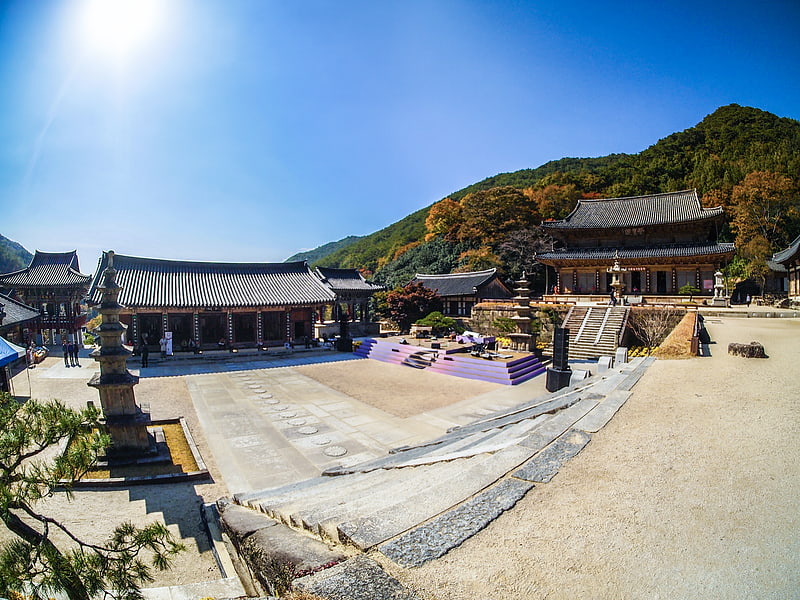
Also known as: 화엄사
Temple in the Gurye County, South Korea. Hwaeomsa literally "Flower Garland Temple” is a head temple of the Jogye Order of Korean Buddhism. It is located on the slopes of Jirisan, in Masan-myeon, Gurye County, in South Jeolla Province, South Korea.[1]
Address: 12, Hwangjeong-ri, Masan-myeon, Jirisan National Park
Jirisan
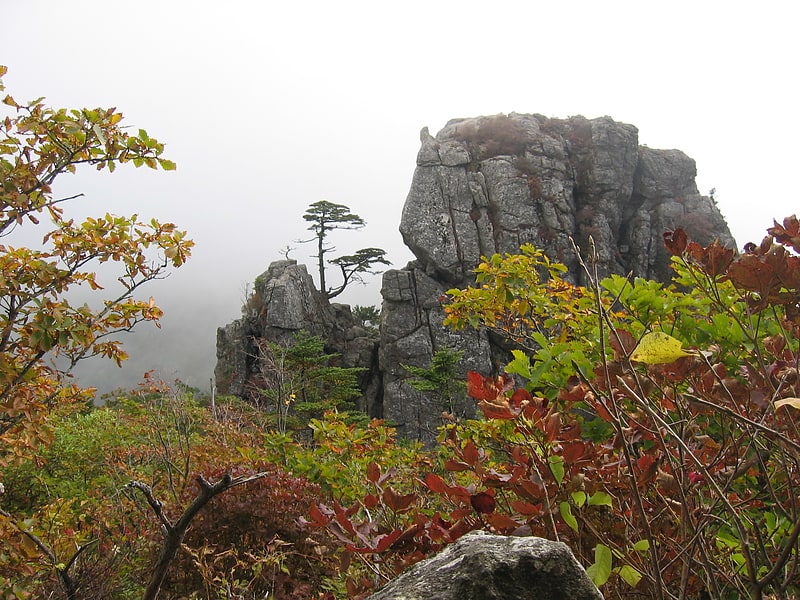
Also known as: 지리산
Mountain in South Korea. Jirisan is a mountain located in the southern region of South Korea. It is the second-tallest mountain in South Korea after Jeju Island's Hallasan, and the tallest mountain in mainland South Korea.
The 1915m-high mountain is located in Jirisan National Park. The park spans three provinces (North, South Jeolla and South Gyeongsang) and is the largest in South Korea. The largest proportion of the national park is in the province of South Gyeongsang. The highest peak of the mountain, Cheonwangbong is also located in this province. Another well-known peak is Samshin-bong (Three Spirits Peak).
Jirisan is at the southern end of the Sobaek and Baekdudaegan mountain ranges, the "spine" of the Korean Peninsula incorporating the Sobaek mountain range and most of the Taebaek mountain range.
There are seven major Buddhist temples on Jirisan. Hwaeomsa is the largest and best-known temple among these. It contains several national treasures, mostly stone artworks from about 600–900 CE. The mountain is also home to the Cheonghak-dong (Azure Crane Village) alpine valley, which includes the Samseonggung (Three Sages Palace), which is a site celebrating one of Korea's foundation myths.
Every year more than 280,000 people visit Jirisan. Summer and autumn are the most popular visiting seasons. The mountain is advertised as having 10 scenic views. These are ‘Sunrise from Cheonwang-bong peak’, ‘Nogodan Sea of Clouds’, ‘Banyabong’s Nakjo’, ‘Full moon at Byukso-ryung’, ‘Piagol Autumn Leaves’, ‘Royal Azalea Blossoming’, ‘Chilseon Valley’, ‘Seomjincheongryu’, ‘Buril water fall’, ‘Yeonha-Sunkyung’. Jirisan National Park has several hiking routes.[2]
Samseonggung
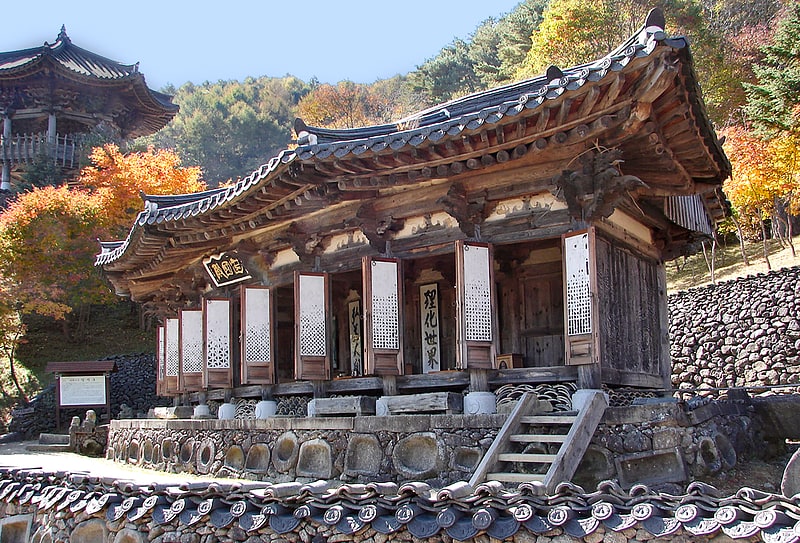
Tourist attraction in Hadong County, South Korea. Samseong-gung is a shrine along the slopes of Jiri Mountain, Hadong county in South Gyeongsang Province, that was created for paying homage to the three mythical founders of Korea:
- Hwanin (환인) - or "Divine Regent". In the traditional Dangun mythology Hwanin is portrayed as the Emperor of Heaven himself.
- Hwanung (환웅) - or "Supreme Divine Regent" is Hwanin's son, who in the traditional Dangun mythology, descended to the peak of a sacred mountain long ago to bring civilized government and thus "benefit humanity".
- Dangun Wanggeom (단군왕검) - or "Grandson of Heaven" is the half-human/half-divine son of Hwanung. Dangun was the fabled founder of Gojoseon, the first Korean kingdom, around present-day Liaoning, Northeast China, and the Korean Peninsula. Dangun is said to have founded the kingdom in 2333 BCE.
Address: 1561-1, Mukgye-ri, Cheongam-myeon, Jirisan National Park
Daewonsa
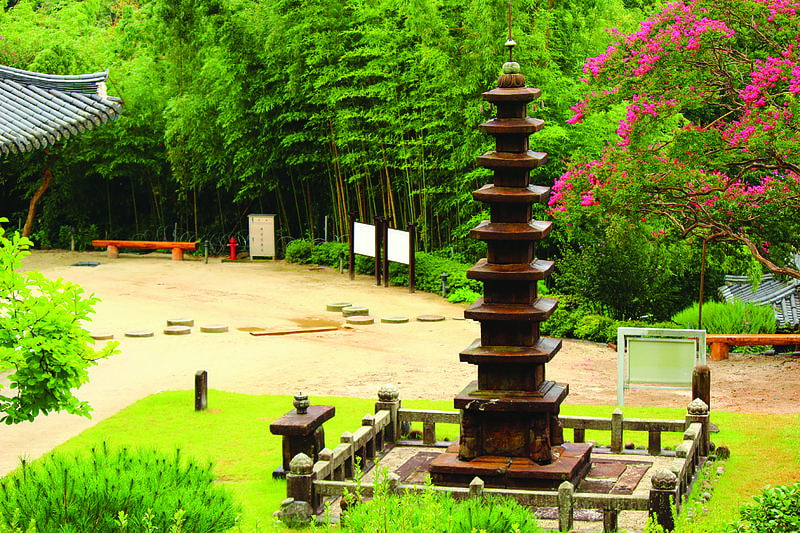
Also known as: 대원사
Buddhist temple in Sancheong County, South Korea. Daewonsa is a Buddhist temple of the Jogye Order in Gyeongsangnam-do, South Korea.[4]
Silsangsa
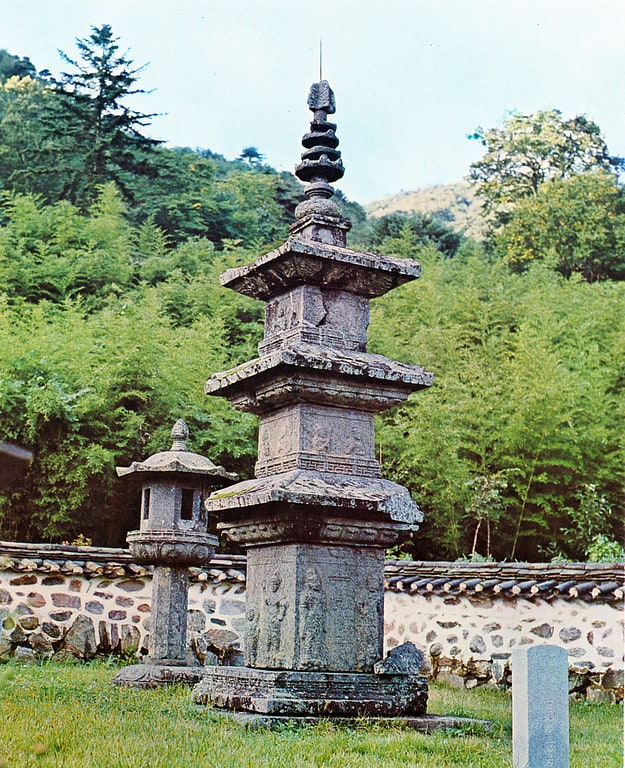
Also known as: 실상사
Temple. Silsangsa Temple is a temple of the Jogye Order located in Namwon, North Jeolla Province, South Korea. The temple is a branch temple of the Geumsan Temple in Iksan. Although the temple is legally situated in Namwon, it is also quite near the Hamyang county of South Gyeongsang Province. It is exceptional since this temple is in a field, as opposed to most Korean temples, which are located in mountainous areas.
It is said that the temple was constructed in the era of Heungdeok of Silla by the great monk Hongcheok (Korean: 홍척; Hanja: 洪陟, fl. 830), a student of Zhiyi, after he returned from Tang China. Since the king himself showed deep faith and devoted himself with the Crown Prince in this temple, the place became highly celebrated, eventually becoming the founding location of the Silsang school of Chan Buddhism. Silsangsa is the oldest temple among the Nine mountain schools.
The temple faced a period of decline during the Joseon era when the structures were destroyed by fire. From this point on, the temple was shut down, although it was later restored three times during the eras of Sukjong of Joseon, Sunjo of Joseon and Gojong of Korea. However, the temple never returned to its previous grand scale.
The Korean War harmed parts of the temple, as fighting forces often passed through the area, but most of the cultural relics remained intact.[5]
Address: 50 Ipseok-ri, Sannae-myeon, 590-853 Namwon
Ssanggyesa

Also known as: 쌍계사
Temple in Hadong County, South Korea. Ssanggyesa is a head temple of the Jogye Order of Korean Buddhism. It is located on the southern slopes of Jirisan, southwest of sacred Samshin-bong Peak, in the Hwagye-dong Valley of Hwagae-myeon, Hadong County, in the province of Gyeongsangnam-do, South Korea.
The temple was founded in 722 by two disciples of Uisang named Sambeop and Daebi. It is said that they were guided to the location by a Jiri-sanshin in the form of a tiger, after being instructed by him in dreams to look for a site where arrowroot flowers blossomed through the snow. They had travelled China for study, and returned with the skull of and a portrait of "Yukcho" (Hui-neng, the Sixth Patriarch of Seon Buddhism) which they respectively buried under the Main Hall and enshrined in it (the skull was later dug up and enshrined in a stone pagoda, which is still there).
In the 9th century the temple was renamed "Ssanggyesa" (Twin-Streams Monastery) by Jingam (Meditaition-Master Jin-gam-seonsa, 774–850). He is also credited with creation of Beompae (Korean-style Buddhist music & dance) after having studied Chinese Buddhist music in Tang Dynasty China. He composed "Eosan" with paleumryul while watching fish swim in the nearby Seomjin River, and therefore the spacious lecture-pavilion still dedicated to Beompae performance and education at the front of Ssanggye-sa is named Palyeong-ru. A stele dedicated to Jingam-seonsa and written by Choi Chi-won still stands in the temple; it is designated Republic of Korea National Treasure 47.
Most of the rest of the temple dates to the 17th century or thereafter, because all its buildings were burned to the ground by Japanese invaders during the Seven Year War.[6]
Address: 76, Sacheon-ri, Uishin-myeon, 539-834 Jindo-gun
Sobaek Mountains
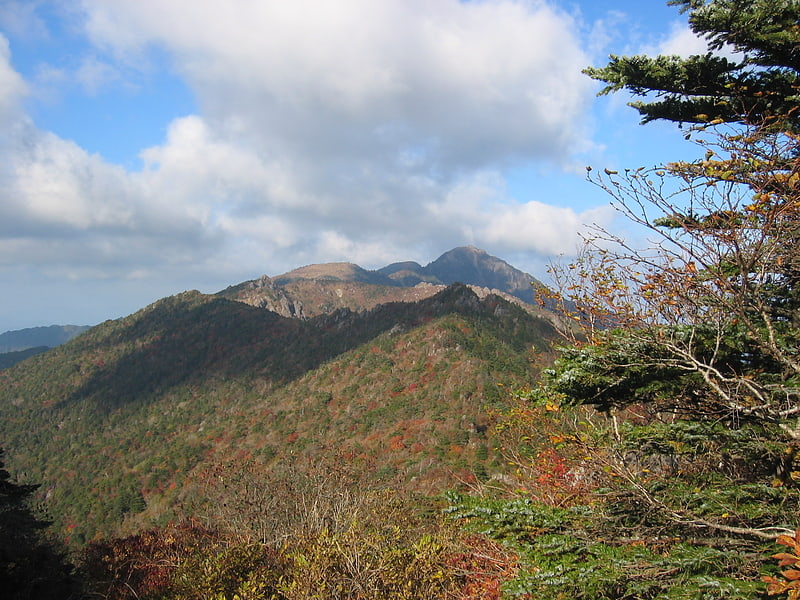
Also known as: 소백산맥
Mountain range in South Korea. The Sobaek Mountains are a mountain range cutting across the southern Korean peninsula. They split off from the Taebaek Mountains and trend southwest across the center of the peninsula. They are traditionally considered to reach their southwestern limit at Jirisan, which is also the highest peak of the range. Other famous mountains in the range include Songni Mountain, Joryeong Mountain, Gaya Mountain, Worak Mountain, and Sobaek Mountain itself. The peaks of the Sobaek Mountains are generally well over 1000 m above sea level.
The Sobaek Mountains form the southern half of the Baekdudaegan, the symbolic "spine" of Korea. They mark the traditional border between the Honam and Yeongnam regions.[7]
Nogodan
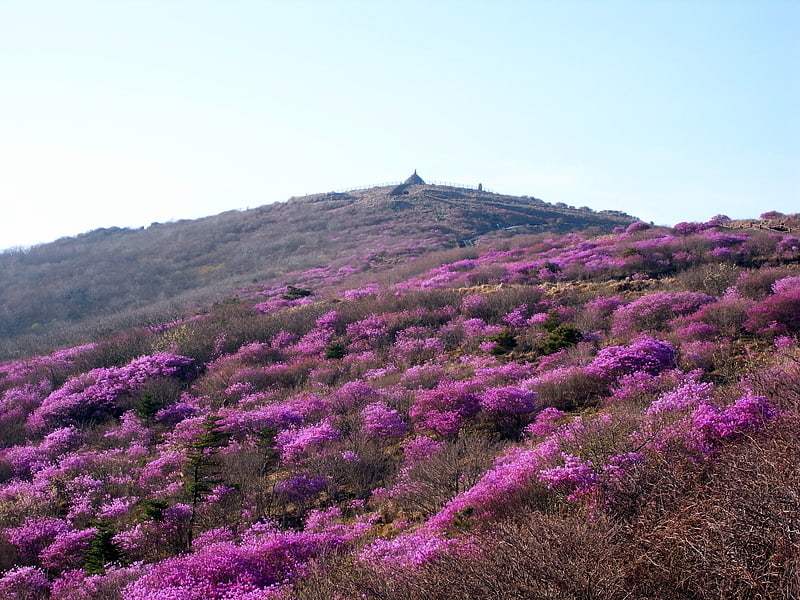
Also known as: 노고단
Mountain in South Korea. Nogodan is a mountain of Jeollanam-do, southwestern South Korea. It has an elevation of 1,507 metres.[8]